Nearly a year after forming government and shutting down the diagnostic and surgical recovery task force, wait times for CT scans have soared to “troubling” levels, the latest data shows.
At Seven Oaks Hospital, the wait for a CT scan surged to 25 weeks in August from 16 weeks a year earlier, according to Manitoba Health numbers. At Concordia, the wait for a scan nearly quadrupled from six weeks to 25 weeks in the same period. And the wait time at Health Sciences Centre increased to 32 weeks from seven weeks in August 2023.
“The results are very troubling,” said Progressive Conservative health critic Kathleen Cook.
The wait times for CT scans are the highest they’ve been since the pandemic, the member for Roblin said during question period this week.
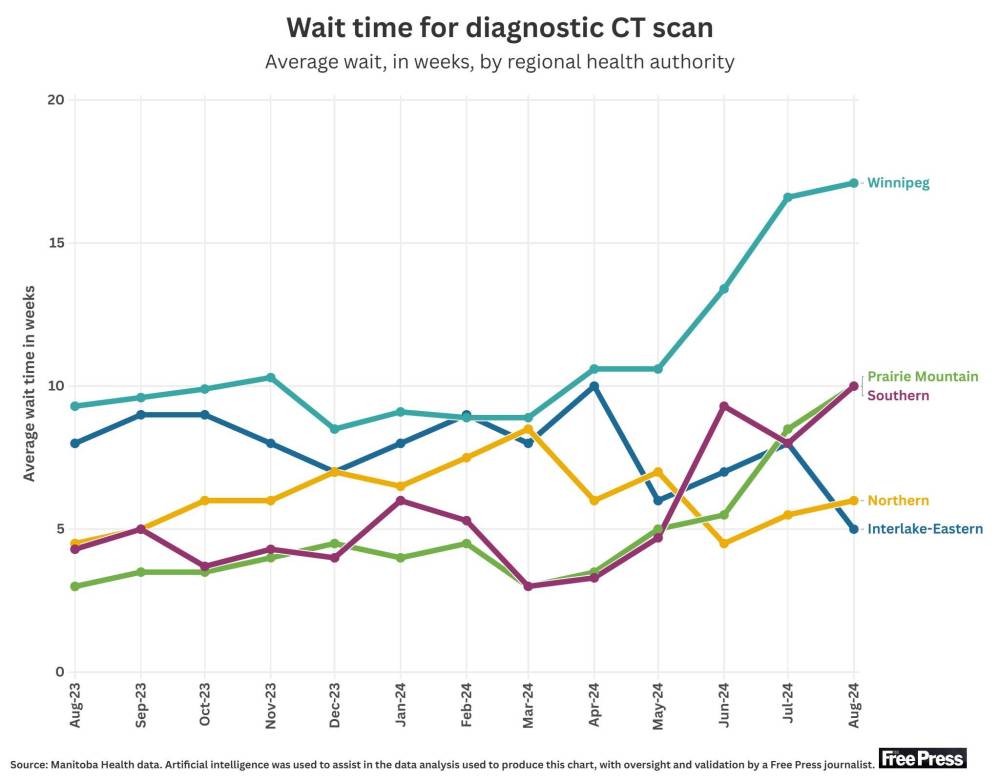
The decision by the NDP to dismantle the task force established by the PCs in late 2021 to eliminate the pandemic-related backlog of tests and procedures was “reckless,” she told the house Monday.
“We’re now seeing the full consequences of this short-sighted decision,” Cook said, asking how the NDP can justify the “staggering increases” to diagnostic wait times.
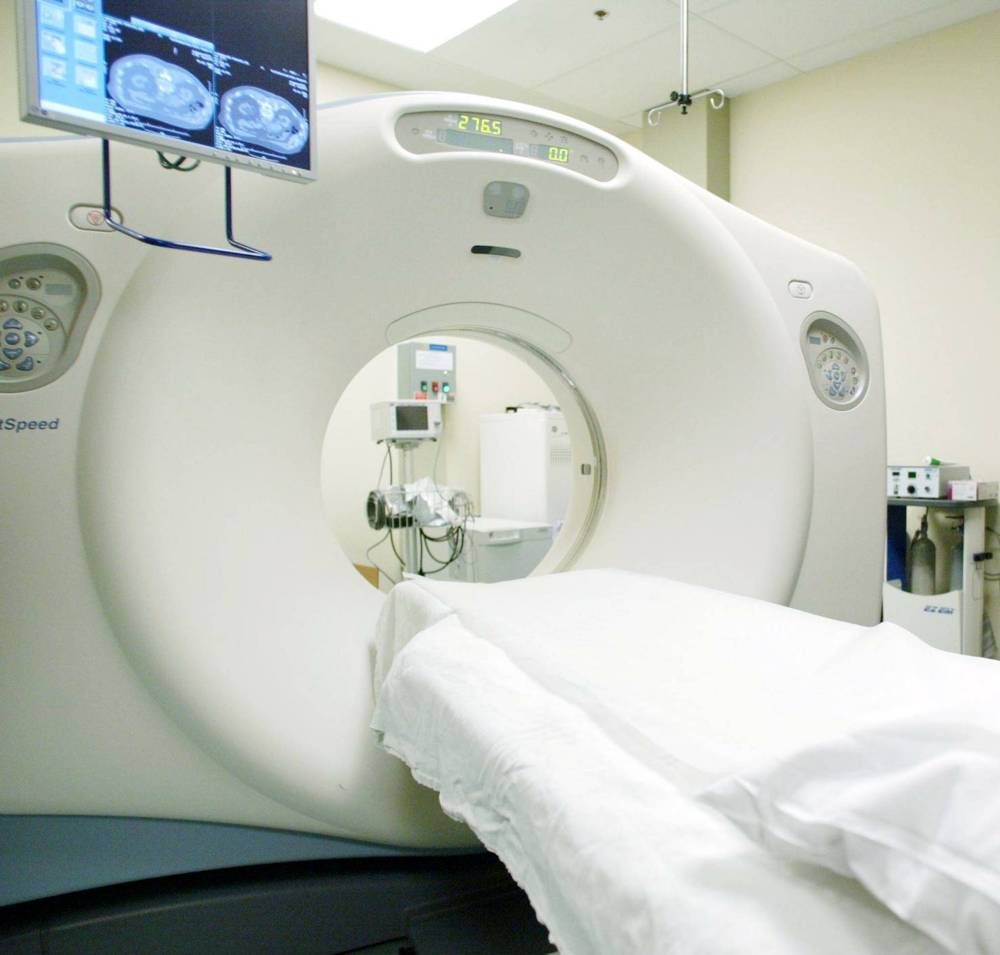
Jonathan Hayward / The Canadian Press Files
Wait times for CT scans in Manitoba have soared to “troubling” levels according to the latest data.
Health Minister Uzoma Asagwara said the NDP government has been working to rebuild the health-care system after staff were “driven out” by the former PC government. Asagwara said they’ve hired 873 net new health care staff, including in diagnostics.
“It’s going to take years to fix the damage done by the previous failed PC administration, but we’re doing that work every day on behalf of Manitobans.”
A spokesperson for the health minister pointed out that waits in August are typically higher because it is “trauma season” when emergent cases bump those waiting for a CT scan, and skew the data.
Still, with CT scan wait times nearing an all-time high, Cook called on the minister to admit that disbanding the task force was a mistake.
Asagwara said the task force spent millions of dollars sending patients out of province, and the NDP is investing that money in public health care and building more capacity.
“We’re doing more CTs than we’ve done previously,” Asagwara told reporters Tuesday after question period.
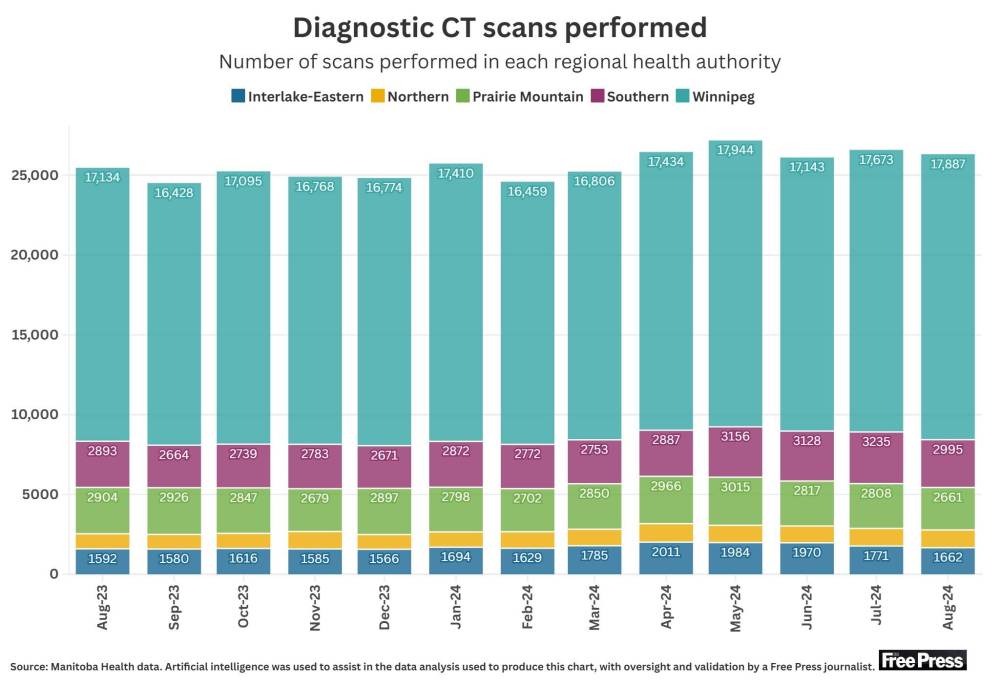
According to the data, 26,321 CT scans were performed in August, compared to 25,470 in August, 2023.
Manitobans who’d been waiting under the previous government to get their names on a list are now in the queue to get them done, the minister said.
“These folks are now getting the care that they deserve,” Asagwara said. “As we build more capacity, we’re also creating more space for folks to get onto these lists and to be eligible for these tests and procedures.”
In August, 11,961 Manitobans were waiting for a CT scan, compared to 14,621 who were waiting in August 2023.
While the province touts hiring 873 net new health-care workers, vacancies and staffing issues that plague diagnostic imaging haven’t improved, said the head of Manitoba Allied Health Care Professionals.
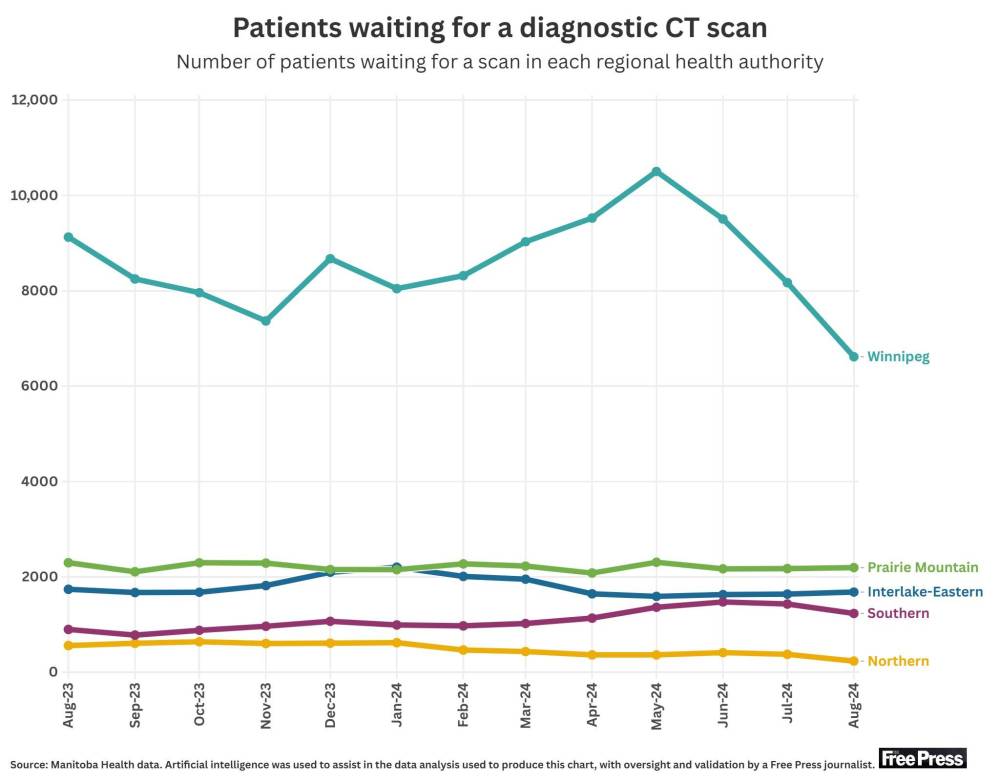
“They don’t have enough technologists to perform the tests,” president Jason Linklater said, pointing to vacancies at HSC and other Winnipeg hospitals.
“All of the problems that existed before, continue to exist today.”
The union represents 7,000 members in 45 professions providing diagnostic expertise, assessment and therapy services and patient and client care, and is currently without a contract.
“They don’t have enough people to do the work,” Linklater said. “What you also see is people working longer hours, being required to stay — a level of intensity and patient acuity that isn’t sustainable, and we’re seeing that burn-out already.”
Shortages in one area can impact other areas, he said.
“Sometimes you’ll have physicians who wish to send someone for an MRI, but the wait for an MRI is over a year now, so they’ll choose a CT scan as a secondary option,” he said.
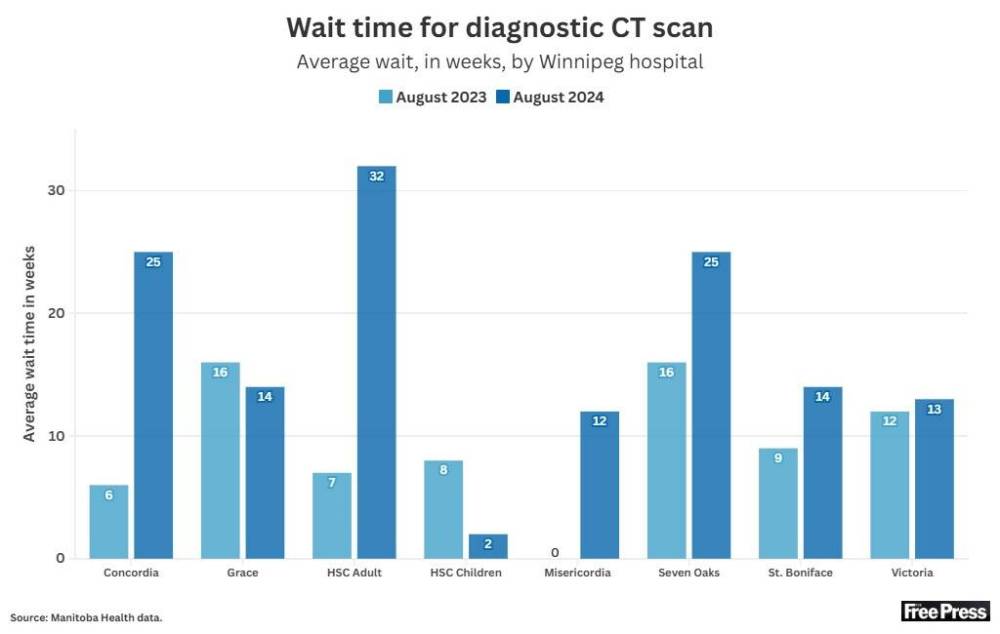
“There’s complex issues related to how the whole system works together. There’s just a huge amount of Manitobans that require diagnostic testing and we don’t have the facilities or the technologists to perform the tests. That’s the bottom line.”
The union leader said he didn’t support the approach of the diagnostic and surgical recovery task force that spent millions on private, out-of-province health care, but appreciated the province having an “executable plan.”
“To date, there just is no plan, and that is a huge part of this problem,” he said.
“If they were serious about investigating the situation, they would produce a forward-looking allied health workforce strategy like Alberta has and like Saskatchewan has done. We continue to advocate for that — over and over again, and still nothing’s done about it.”
carol.sanders@freepress.mb.ca

Carol Sanders
Legislature reporter
Carol Sanders is a reporter at the Free Press legislature bureau. The former general assignment reporter and copy editor joined the paper in 1997. Read more about Carol.
Every piece of reporting Carol produces is reviewed by an editing team before it is posted online or published in print — part of the Free Press‘s tradition, since 1872, of producing reliable independent journalism. Read more about Free Press’s history and mandate, and learn how our newsroom operates.
Our newsroom depends on a growing audience of readers to power our journalism. If you are not a paid reader, please consider becoming a subscriber.
Our newsroom depends on its audience of readers to power our journalism. Thank you for your support.